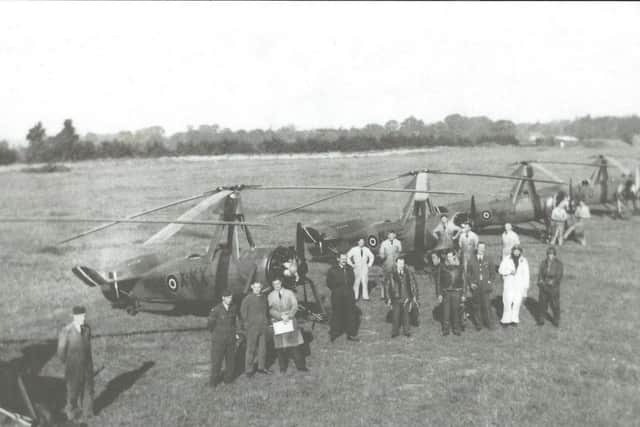Leighton Buzzard’s Wartime History - The Unique Autogyro Squadron and the 'massive' impact of top secret work in the town
and live on Freeview channel 276
When RAF No.60 Group Headquarters operated from Oxenden House in Plantation Road, Leighton Buzzard, their secret radar technology was in its infancy just as the aerial threat to Britain reached its peak. The pressure on ‘Oxenden’ for higher radar accuracy was immense and it never eased across the war.
Early radar was by no means accurate. Operators stared at a set of wavy lines on small screens, trying to conclude the direction, distance and size of approaching enemy aircraft. They also required extra information from human observers.
Advertisement
Advertisement
Consistency in the calibration of radar equipment and those using it became critical. A 20 degree error on a target 50 miles away would see the RAF’s pilots miss by 17 miles.


Radar stations needed practice on slow moving and predictable targets. Initially, large weather balloons were towed behind boats in the English Channel but they proved inaccurate and useless in bad weather. Leighton Buzzard turned to a revolutionary aircraft – the Cierva C30 autogyro.
Developed in the 1920s by Spaniard Juan de la Cierva, the propeller powered aircraft with free spinning rotor blades above, offered great potential. The ‘Cierva Autogiro Company’ were contracted to try radar calibration under experienced test pilot, Reggie Brie.
With the Plantation Road Headquarters in charge, radar stations from the Isle of Wight to the Orkneys were calibrated. Each one might take two weeks. As France fell, Dunkirk was evacuated and the Battle of Britain began, work intensified. Calibration became such a priority that Sir Hugh Dowding supervised it personally.
Advertisement
Advertisement
Each time a test took place, the pilots risked their lives. The RAF Museum in London recounts “They flew out into the English Channel and back; Fighter escorts were provided, and occasionally needed, in areas where enemy aircraft might be encountered.”
The autogyros became No.1448 (Rota Calibration) Flight based at RAF Duxford in Cambridgeshire, but with the British calibration strategy and radar technical needs managed from Oxenden House by Eric Eastwood. He was later knighted, became a Fellow of the Royal Society, was a major contributor to radar research and ‘Mentioned in Despatches’ for his significant contribution to the war effort.Later, the autogyros, now the RAF’s primary radar calibration tool, moved under the control of Squadron Leader Henry ‘Harry’ Marsh. Through his and Eric’s collaboration, the aircraft moved to nearby RAF Halton and formed No.529 (Rota) Squadron – the RAF’s first and only autogyro Squadron. Wearing the code ‘KX’ on their fuselages, they operated exclusively for Oxenden House.
The impact of the ultra secret Leighton Buzzard work was massive. In his memoirs, Squadron Leader Basil Henry Arkell advised, “So shrouded in secrecy were the No. 60 Group controlled operations of the Cierva autogyros during the 1939-45 war that few people, even within the RAF itself, were aware of what they were and what they were doing. Yet without their vital contribution, the crucial Battle of Britain might never have been won.”